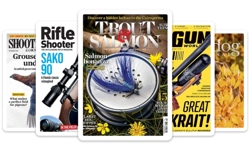As noted in this space in the May/June issue, B2B’s are most definitely wrestling with the challenges associated with the need for fundamental changes in structures, cultures and operations to enable such a transformation. But making this leap is just as imperative on the consumer side — and the process there could be even more difficult, at least for some publishers.
Why? Big consumer publishers generally have less hands-on experience in cross-media than their B2B counterparts. They’ve also been slower to react to the revolutionary implications of the internet for traditional media. Therefore, their learning curves are going to be more compressed.
With their predominantly controlled-circulation models, B2B’s vulnerability to ad revenue swings (whether driven by the economy or by other media) has forced them to broaden their revenue bases to survive. In addition to traditional extensions (such as the trade shows that have long generated as much or more profit than publications at many companies), B2B’s have diligently developed databases that enable cross-marketing among their brands and media channels. Just as important, over time, they’ve become better at avoiding the human minefields that surround integration issues (resistance to change, territoriality, etc).
Within consumer publishing, on the other hand, brand extensions and cross-marketing among products have been more important to special interest, circulation-driven publishers than to the big, highly advertising-dependent companies. At the latter publishers, functions and media still tend to be decentralized and "silo-ed" by brand. This could make it quite challenging to attempt to erase boundaries and deploy talent across media.
Missionary zeal
Still, based on their statements in the press, consumer publishers are becoming more infused with media-neutral missionary zeal with each passing day — so perhaps they will overcome organizational and attitudinal hurdles through sheer force of will. It’s been riveting to observe how quickly attitudes have changed since the internet rebounded with a vengeance and began sucking revenue away from traditional media.
Consumer publishers (and even editors) are now quoted about the need for magazine and net staffs to operate as single, seamless entities. Further, as Jon Friedman recently pointed out in MarketWatch.com, "Stunningly, magazine industry executives now suggest that the internet represents a greater prospect for stable advertising-revenue growth than the pages of a publication. As recently as a few years ago, when the internet business was mired in a post-2000 slump, this thought would have been regarded as far-fetched."
The 2005 edition of the Veronis Suhler Communications Industry Forecast certainly seems to support this conversion in thinking. VSS reports that "new media" — defined as consumer internet, cable and satellite TV, satellite radio, B2B e-media, movie screens and video games — accounted for 16.7% of all US ad spending this last year, and will jump by 17% per year for the next five years, to reach 26.3%. VSS also predicts that consumer time spent with traditional media will drop from 64% to 54% over the next five years, while time spent with subscription- and fee-based media will rise to 46%.
Just as they have for B2B’s, circulators (now truly more aptly named "audience developers" in all media companies) will play a critically important role in enabling consumer publishers to reach out to existing and new customers through new channels.
Here are a few examples of experimentation along these lines:
* Through a partnership with London-based Flytxt Ltd, Time Inc is offering mobile text messaging services to subscribers, with the goal of "reaching its readers wherever they are and forming interactive relationships with them," according to their announcement. The programs are starting with People and Teen People (the Teen People Mobile Club offers news, contests and horoscopes) but Time Inc will not limit them to titles geared to younger audiences.
* Hearst has its own wireless partner, and one of its first offerings is a branded CosmoGirl! text messaging daily horoscope service (fee: $1.99 per month).
* TV Guide is offering short video clips on its web site and a VOD format for Comcast, Time Warner digital and TiVO subscribers.
* The Economist offers loyalty-building free e-newsletters, RSS feeds and weekly email article alerts by subject matter, a mobile edition ($3.95 per month for print subscribers, $7.95 per month for non-subscribers) available in both rich-media and text-only formats, and pay-for premium content access (site access free with print subscription).
* Maxim has partnered with MSN Video to stream free videos — viewable in return for sitting through 15- or 30-second commercial videos.
* Sports Illustrated is enhancing the value of its print edition by giving subscribers access to SI.com streaming videos that are add-ons to the week’s featured articles.
Exciting stuff. And with all of the magazine circulation challenges over here, branching out into other media may be looking better than ever to consumer marketers.
FEATURE
Consumer publishers see the “media-neutral” light
In the US, a day doesn’t go by without the appearance of multiple news items relating to publishing companies racing to become “media-neutral” in response to the internet’s formidable competition for time and dollars. Karlene Lukovitz takes up the story.










